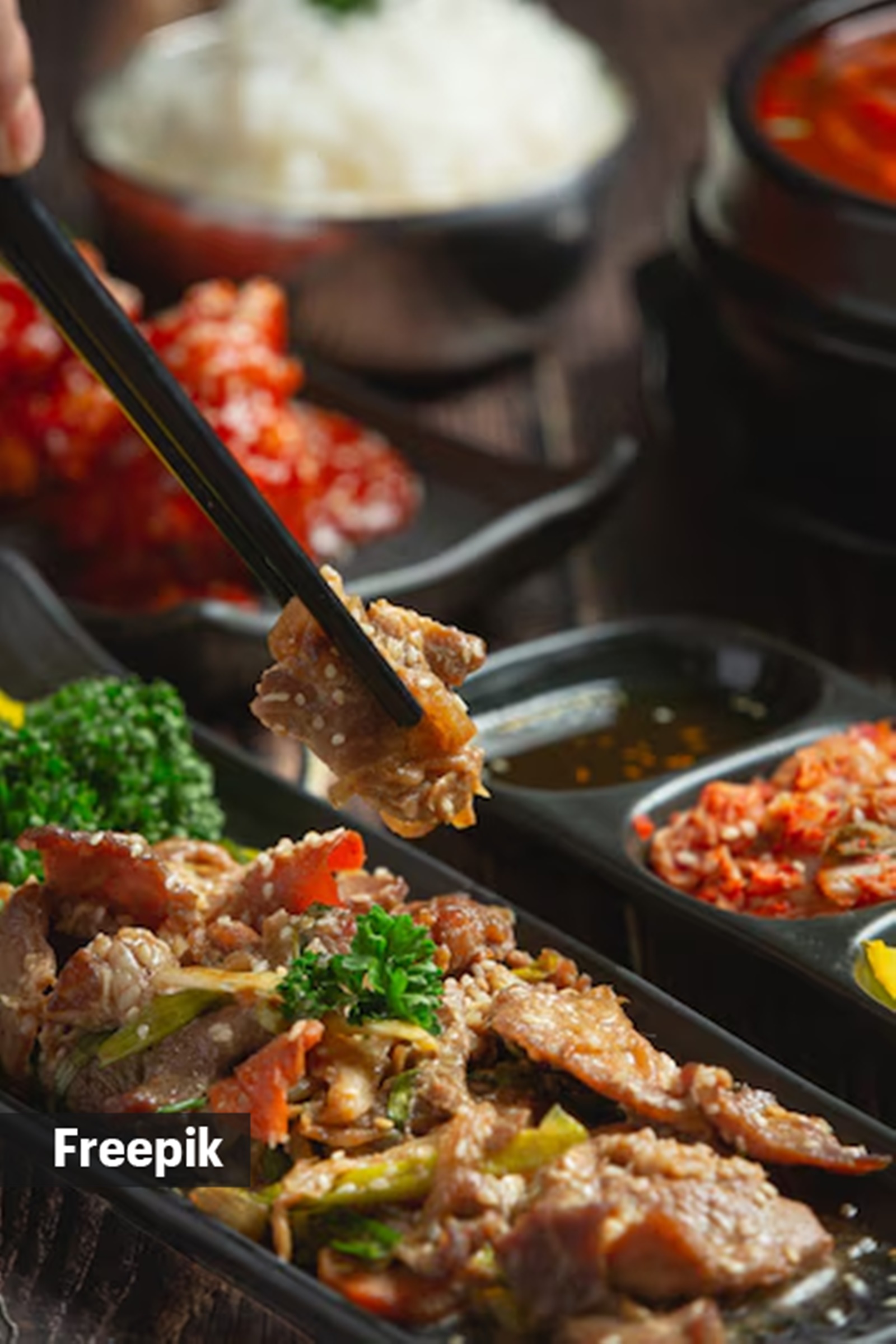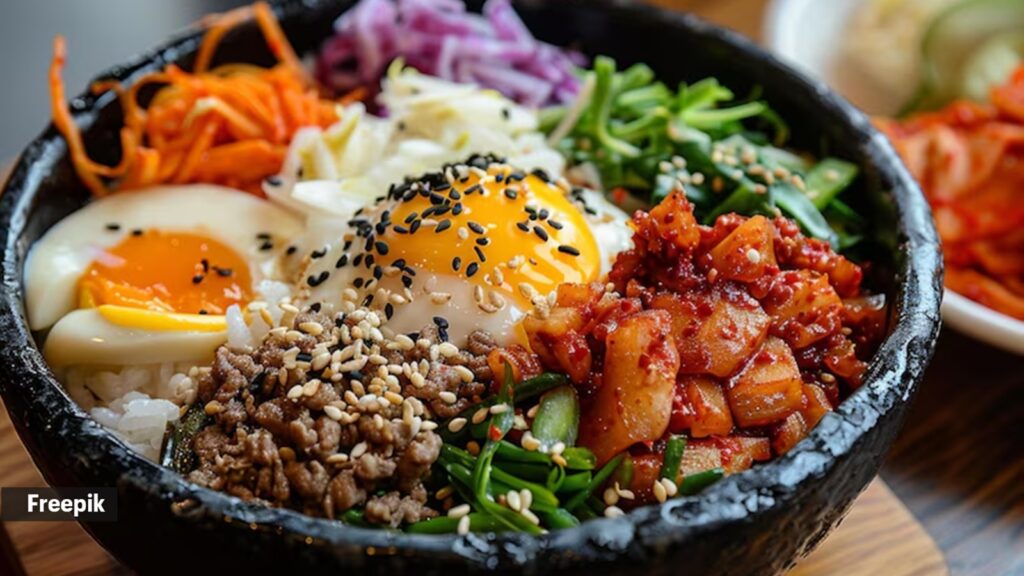The Korean cultural phenomenon has spread across India, captivating millions with its inspiring music, trendsetting fashion and of course, delicious food. Popularized primarily by Korean TV series (also known as K-dramas), Korean food has captivated Indians with its unique flavours, spiciness and fresh ingredients.
What began as a niche interest has blossomed into a full-fledged cultural phenomenon, with Korean cuisine fast gaining mainstream status across India. “The popularity of K-dramas in India has led to a significant increase in the demand for Korean food due to its portrayal in these shows,” says Garima Dev Varman, certified nutritionist and medical content analyst, The Healthy Indian Project (THIP).
While ramen may have been many Indians' first introduction to Korean food, lesser known dishes such as kimchi, spicy ramen, bibimbap, buldak and tteokbokki have seen a notable rise in popularity. “The global Korean Wave, which encompasses Korean pop culture including K-pop music, has further fuelled interest in all things Korean and Korean food,” she said.
At the forefront of this culinary revolution are the proliferation of Korean restaurants, each striving to introduce authentic flavours and cooking techniques to Indian palates. Influencers and celebrities who share their experiences with Korean food “are also playing a key role,” Verman said, adding that the availability of Korean prepared meals in Indian supermarkets “has made Korean food more accessible.”
“While bibimbap and kimchi are now widely recognised and enjoyed, other dishes such as kimbap (Korean sushi roll) and jjigae (Korean stew) are also gaining popularity,” points out Badal Saboo, partner at Gun The Palace, an authentic Korean restaurant in Noida.
Banchan, a range of small dishes served alongside main courses, offer a diverse taste experience. Japchae, made with sweet potato noodles mixed with vegetables and meat, offers a unique flavour that appeals to local palates. Samgyeopsal, grilled pork belly wrapped in lettuce leaves, has also found a niche among those who prefer hearty, flavoursome meals. This wide range of menu options reflects Indian consumers' growing sophistication and curiosity about Korean cuisine.

Nutritional profile of traditional Korean cuisine and its alignment with Indian dietary preferences
The nutritional profile of traditional Korean food and the emphasis on fermentation and natural preservation methods in Korean cuisine is in line with Indian dietary preferences and health benefits.
Dheeraj Mathur, Cluster Executive Chef, Radisson Blu, Kaushambi, Delhi-NCR, says young people these days prefer to eat healthy, even when dining out. Low-fat dishes are also common in Korean cuisine. “Korean food has health benefits. With ingredients like tofu, a variety of microgreens and seafood, you can get a good dose of vitamins, minerals and protein. Also, traditional Korean dishes such as kimchi, a staple of the Korean cuisine, are rich in probiotics that aid digestion.”

Shriya Nayak, owner of Mamba Resto Bar in Thane, agrees: “The emphasis on seasonal ingredients and a variety of textures speaks to the growing interest in plant-based and healthy eating in India.”
 Korean restaurant owners in India are getting creative with their dishes (Source: Freepik)
Korean restaurant owners in India are getting creative with their dishes (Source: Freepik)
Challenges faced in sourcing authentic Korean ingredients in India
Maintaining the true authenticity of the cuisine can be difficult as many key ingredients are not readily available or must be imported, raising costs.
Sabu agrees that Indian chefs face several challenges in sourcing authentic Korean ingredients, mainly due to limited availability and the high import costs of key items like gochujang (Korean chilli paste) and doenjang (fermented miso). “To overcome these difficulties, chefs often use locally available substitutes, such as using Indian radish instead of Korean radish in kimchi, or locally grown Chinese cabbage and Korean chillies.”
Chef Shankar Krishnamurthy, co-founder and director of culinary operations and chef relations at Book My Chef, agreed that availability of ingredients can be limited in India. He said “robust trade and growing demand,” especially in metros, is helping the situation.
Chef Mathur, however, disagrees. Sourcing Korean ingredients is no longer that difficult, he says. “Growing popularity and increasing demand has led supermarkets and online platforms to stock the necessary products as per the audience's interest.” He also said South Korea has increased production and strengthened trade routes to meet export demand.
Adapting menus to suit Indian dietary preferences
A chef's expertise lies in understanding local palates and adapting flavours accordingly, so another hurdle many Korean chefs face is the prominence of pork and beef in traditional Korean cuisine, necessitating menu adaptations to cater to Indian dining preferences, including vegetarian options and the exclusion of certain meats.
Despite these challenges, Korean restaurateurs in India are getting creative and finding innovative ways to blend local flavours with traditional Korean recipes. “In India, menus are often adapted to suit local dietary requirements, offering vegetarian options or omitting certain meats, as pork and beef are common in Korean cuisine,” says Nayak.
Vegetarian versions of meat dishes use substitutes like mushrooms, tofu and paneer to recreate textures and flavours without sacrificing the authenticity, Chef Mathur explained. “For example, bulgogi, a traditional beef dish, can also be made with chicken or paneer to suit local tastes,” he said.
For those who avoid certain meats, Sabu talks about using pork- and beef-free versions of popular dishes like bulgogi (marinated grilled meat) and kalbi (marinated short ribs). Fusion dishes like paneer kimchi stir fry combine Indian ingredients with Korean cooking techniques, ensuring the food is authentic yet suitable for local dietary restrictions.
© IE Online Media Services, Inc.
First uploaded on: June 14, 2024 15:37 IST



